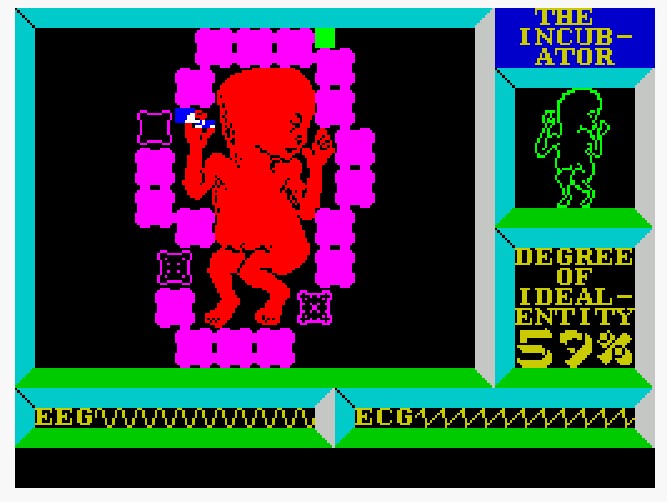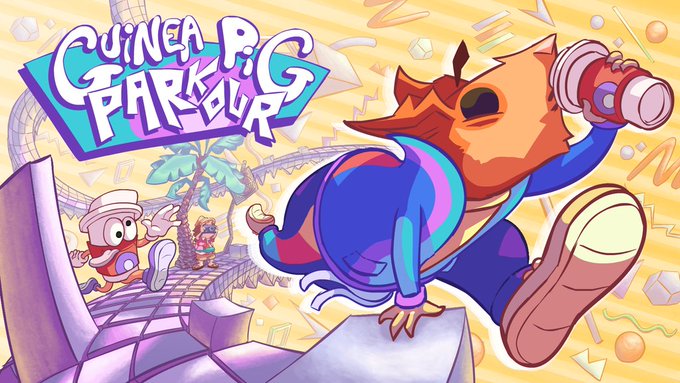Besides showcasing new games, this year’s IndieCade proved to be a time for looking back on the festival and indie games in general. On a panel called “Indie Histories: Handmade Pixels and the IndieCade Book,” game theorist Jesper Juul and IndieCade co-founder Celia Pearce discussed their books on the history and culture of indie games.
“We’re covering a lot of the same territory, but from different angles,” Pearce remarked during the panel.
Cover art is from Pippin Barr’s 2011 game The Artist is Present.
Following the Festivals
After the panel, Juul and Cliqist talked more about his book, Handmade Pixels: Independent Video Games and the Quest for Authenticity.
“[There are] a million ways to write a history,” Juul tells Cliqist. “There is an infinite amount of things you can write about.”
With so many indie games at this point, how did he select what to include in a written history?
Excerpt from Handmade Pixels: Independent Video Games and the Quest for Authenticity written by Jesper Juul and published by the MIT Press. (Top row, left to right: Dys4ia, EVERYTHING IS GOING TO BE OK. Bottom: The Stanley Parable.)
“Focused a lot on institutions,” Juul says, explaining that this led to a clearer timeline. For this institutional history approach, he looked at who promotes indie games—festivals.
According to him, festivals don’t just award and recognize indie games.
“A festival like this [Indiecade] defines what an indie game is,” Juul said during the panel.

Design on the IndieCade 2019 shirt.
Categorizing Indie Styles
What does count as an indie game? Defining it can actually be a more complicated matter.
During the panel, Juul explained three types of independence he adapted from film scholar Geoff King’s study of American indie movies:
- Financially Independent
- Aesthetically Independent
- Culturally Independent
Financially independent appears self-explanatory, but Juul elaborated on the other types. According to him, aesthetic independence describes indie games that use art and design to distinguish themselves from AAA games.
Juul listed examples during the panel: games that look like crayon art, torn paper, and older pixelated games. Even a recent Nindies showcase had its own example—Gleamlight, an upcoming game that looks like stained glass art.

One of the examples in Handmade Pixels is the 2009 game And Yet It Moves by Broken Rules. Note how it looks like torn paper.
“[Indie developers] deliberately made a stylistic decision to make a game that’s different,” Juul said on the panel, adding that it was also a way to signal that it’s not AAA or a traditional mobile title.
“You deliberately chose this style to stand out,” Juul tells Cliqist.
Promising Culture and More
As for cultural independence, Juul says that today’s indie games like to reference “high culture.” According to him, there is a trend of indie games being more political, therapeutic, and personal. He even mentioned “therapeutic community-building games.”
Juul wrote in Handmade Pixels that indie games tend to “carry a cultural, political, and moral promise,” promoting themselves as more diversely representative of people and as gameplay experiences that can “make the world a better place.”
Pearce said that the mainstream game industry can be “blindly apolitical” during the panel. Outlets like Kotaku, Polygon, and The Verge have also covered this issue. It later gained even more significance after Kotaku reported on Blizzard suspending Hearthstone pro player Ng “Blitzchung” Wai when he supported Hong Kong protestors “during a post-match interview.”
According to Pearce, indie games can say more.
An excerpt from Handmade Pixels. (Top: Papers, Please. Bottom: Fez.)
Reflecting on Early ‘80s Games
Though Juul says creators of ‘80s games normally didn’t think of themselves as indie or alternative, he still shared the 1984 game Deus Ex Machina as an example of a culturally independent game.
“It would be super timely today,” Juul says, explaining that it had themes referencing Shakespeare and existential concepts. But he adds that Deus Ex Machina’s original developer wanted to be ahead of the curve, not different from the mainstream. According to Juul, the developer assumed games in the future would be like interactive movies.

Automata UK’s Deus Ex Machina is included in Handmade Pixels.
While on the panel, Pearce shared a contrasting perspective on ‘80s games. According to her, all games in the ‘80s were indie because there was no real game industry at that point.
Independent Games = Interdependent Games
While Juul’s Handmade Pixels looks at multiple indie game festivals, Pearce is writing IndieCade: A History – The Interdependence of Independents. As the title suggests, it’s focused on the festival she helped establish in 2007.
The title suggests even more. While Juul talked about different types of game independence during the panel, Pearce said the rise of indie games “has involved interdependence of a lot of different elements.”
She described it as an indie game ecosystem that went beyond the festival circuit, including other elements like creation tools, new platforms, public perception and policy, “indieconomics,” and game academia.

According to the book’s website, IndieCade: A History will feature archival material and photographs.
Handmade Pixels is now available for purchase. Its selection of indie games include titles like Braid, Journey, Gone Home, and Spelunky. While his book contains excerpts from interviews with people working in indie games, Juul has made the full interviews freely available on his website.
Pearce’s IndieCade: A History has no concrete release date yet.



